How much light is enough to light a room? Most designers and architects use two foundational principles of lighting design when planning and specifying lighting for any space:
- the qualitative (or aesthetic) aspect of light
- the quantitative (or engineering) aspect of light
Calculating for total lighting required is considered quantitative.
The lumen method is the most commonly used formula for calculating the total lighting requirements needed for a space. With this formula, first establish the intended use of the space, then reference the IES foot candle guide and finally, multiply the foot candle recommendation by the square footage of your space.
You can also use the lumens calculator below the table of contents. If you are new to this type of calculation, read the guide below the calculator to understand the difference between wattage, lumens and other concepts that play a role in adequately lighting for a space.
Table of contents
Lumens Calculator
Use this calculator to calculate the lumens needed to light a room. These calculations work for typical ceilings that are eight to ten feet high. For taller ceiling heights, please see our chart below.
All field must be filled positive numbers.
Please note that these are estimations. For exact analysis, please consult a lighting design professional.
Helpful Lighting Terms
Lumen
Lumen output is a measurement of the total quantity of visible light emitted by a light source. It’s also commonly known as brightness or light output.
The reference point: A standard 100-watt incandescent light bulb produces about 1,500-1,700 lumens. Strictly speaking, 600 LED lumens provides the same amount of light as 600 incandescent lumens.
LED lights provide higher Color Rendering Index (CRI), so, while they more accurately reveal the colors of the subject being lighted, they don’t provide more light.
Wattage
Wattage is a measure of how much electricity (or energy) a light bulb consumes to achieve its lumen output.
Each type of light source — LED, fluorescent, halogen or incandescent bulbs — has a different lumen-to-watt ratio. If a 100-watt incandescent light produces 1,500 lumens, and a 10-watt LED light does the same, the 10-watt LED bulb may claim 100-watt equivalency and energy efficiency.
Here’s a lumen-to-watt chart. Please note that these ratios may vary slightly, even between different LED products.
Foot-candle
Foot-candle is the original measurement system for light intensity on a one-square-foot surface from a uniform source of light. In other words, a foot-candle is the light measured one foot away from a candle.
Considering the human-centric principles of lighting design, the IES (the largest society of professional lighting designers) provides a footcandle chart on how many foot-candles of light humans need to perform tasks comfortably in different spaces.
For example, for washing dishes, they recommend that your lighting provides 20 foot-candles of light at two feet, six inches off the floor. This is also referred to as the horizontal target.
The Lumen Method – How to Calculate Total Lumens Needed
- Determine room size by square footage. Multiply the length times the width of the room to get the room square footage. For example, if the room is 10 feet wide and 10 feet long, the room’s square footage will be 100 square feet.
- Establish the footcandle requirement for your application. Lighting requirements vary depending on the type of room being lit, also known as the application. For example, a bathroom or kitchen will require more footcandles than a living room or bedroom. Once you establish the intended use of your space, browse this footcandle chart for the IES-recommended footcandle requirement for your application.
- Multiply the room square footage by the footcandle requirement. For example, a 100-square-foot living room that needs 20 foot-candles will need 2,000 lumens, and a 100-square-foot dining room that needs 40 foot-candles will require 4,000 lumens.
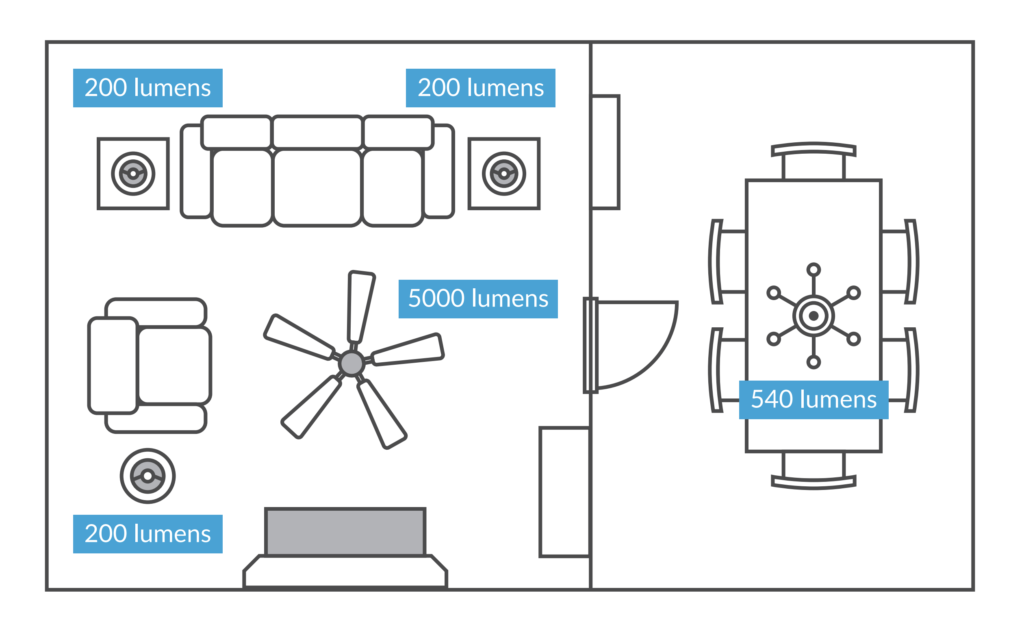
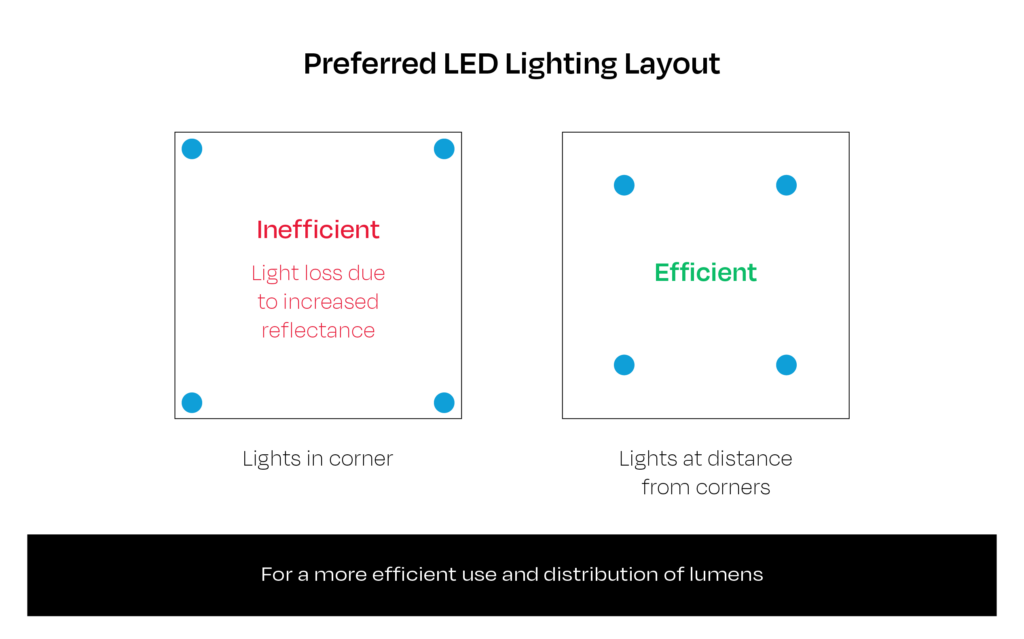
We’ve created a helpful guide to How Many Lumens You Need that walks you through this calculation in more detail.
Footcandle Requirements for Various Applications
Commercial Lighting Footcandle Requirements
| Room | Foot-candles Needed |
|---|---|
| Offices: Average Reading and Writing | 50-75 |
| Offices: Hallways | 10-20 |
| Offices: Rooms with Computers | 20-50 |
| Auditoriums / Assembly | 15-30 |
| Hospitals: General Areas | 10-15 |
| Hospitals: Labs / Treatment Rooms | 75-100 |
| Libraries | 50-100 |
| Schools | 30-100 |
Residential Lighting Footcandle Requirements
| Room | Foot-candles Needed |
|---|---|
| Living Room | 10-20 |
| Kitchen: General | 30-40 |
| Kitchen: Stove | 70-80 |
| Kitchen: Sink | 70-80 |
| Dining Room | 30-40 |
| Bedroom | 10-20 |
| Hallway | 5-10 |
| Bathroom | 70-80 |
Summary: Calculating Total Lumens Needed for a Room
Let’s recap how to gauge how much light you need for a space. Multiply your room square footage by the footcandle requirement. For example, a 100-square foot living room, which needs 20 foot candles, will need 2,000 lumens. A 100-square foot dining room, which needs 40 foot-candles, will need 4,000 lumens.
Download Free IES Footcandle Recommendations by Application Index »
Ceiling Height Variable
Note: Only read this section if your ceiling height is taller than 10ft. If your ceiling height is below 10ft, our lumens calculator will be sufficient for determining the required light output for your application.
The target light level for this Variable Ceiling Height Lumens Chart is 20 footcandles, with light-colored walls with a 0.90 reflectance value (for medium-dark walls, please double the required lumens). With these constraints, the chart below will provide the approximate total lumens you need for your space; divide the total lumens by the number of light fixtures you plan to use.
| Room Dimensions | 11′ Ceiling | 12′ Ceiling | 15′ Ceiling |
|---|---|---|---|
| 12′ x 12′ | 3,600 lm | 3,900 lm | 4,400 lm |
| 15′ x 15′ | 5,200 lm | 5,400 lm | 6,000 lm |
| 15′ x 20′ | 6,700 lm | 6,900 lm | 7,400 lm |
| 20′ x 20′ | 8,600 lm | 8,900 lm | 9,400 lm |
These calculations use 65-degree beam spread downlights, downlights with tighter beam spread require more lumens. For illumination targets different than 20 fc, multiply your required lumens by the percentage of the difference. Using a dimmer is also a helpful way to adjust the light level of your room.
Wall Color Variable
The color and darkness of walls, ceiling and furniture absorb a significant amount of light. As mentioned, having medium-dark walls and ceilings should multiply your required total lumens by 2, and very dark surfaces should multiply your total lumens by 4.
Lumens to Candlepower Conversion
Candlepower is a unit of measurement for luminous intensity. It expresses levels of light intensity relative to the light emitted by a candle of specific size and constituents.
The historical candlepower is equal to 1.02 candelas. In modern usage, candlepower is sometimes used as a synonym for candela. A fixture that emits one candela of light will produce approximately one lumen of light if the fixture uses a beam spread of 65 degrees.
Accounting for Personal Taste
Personal preference will play a large role in determining how much light you need in a space. If you like the room to be especially bright, you may want to add an additional 10-20% to our numbers and then install dimmers to adjust the light to desired levels.
When lighting is properly designed in a space, you notice the room and the objects in it. In other words, you notice what the lighting illuminates, not the lighting products themselves. Bad or deficient lighting design shows up as hot spots, dark spots and unintentional shadows.
Good or efficient lighting design accounts for total general and task lighting required for a space. Dynamic or superior lighting design factors the qualitative, human experience. It lights for vertical (not merely horizontal) visual impressions, such as walls — as well as ceilings with uplighting to minimize shadows and dark spots for smooth, streamlined and evenly distributed light.
Alcon Lighting creative director and co-founder David Hakimi works to improve lighting through research, development and education. David strives for efficiency in lighting, affording architects, lighting designers and engineers the ability to maximize LED lighting design and application. David is a graduate of the University of California, Los Angeles, where he received a Bachelors in history. David also studied lighting design at IES in Los Angeles. He traces his and Alcon Lighting’s commitment to innovation, accountability, quality and value to lessons learned from his father, Mike Hakimi, a lighting craftsman, salesman and consultant in Southern California for more than four decades. Today’s lighting for commercial use requires a deep, complete understanding of smart lighting systems and controls. David takes pride in his lighting, energy controls and design knowledge. He is driven by the desire to share his insights into lighting specification and application. This quest to share his knowledge was the impetus for David to create Insights, Alcon Lighting’s blog and resource center for helping the reader understand lighting and its application to space.

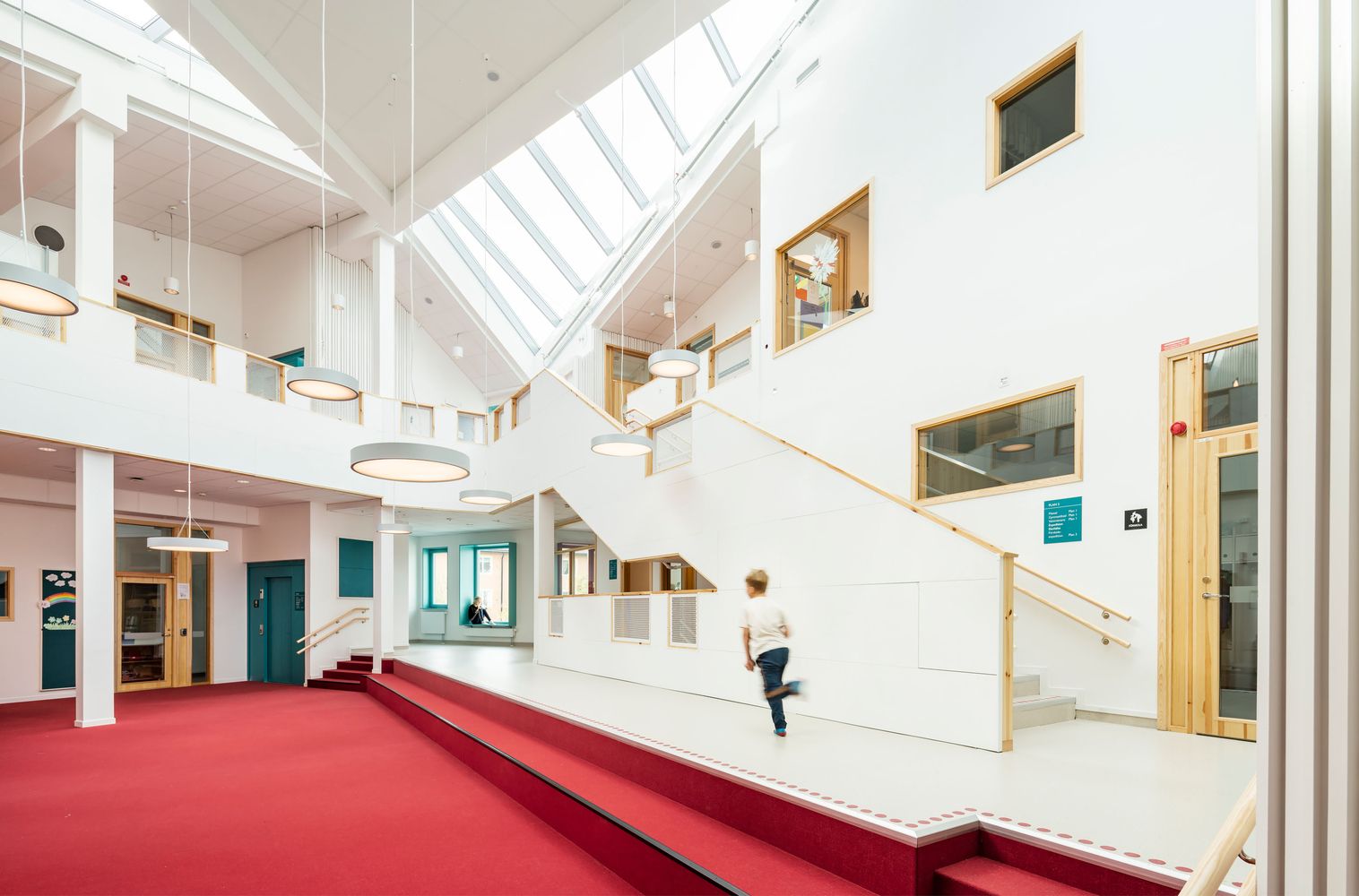
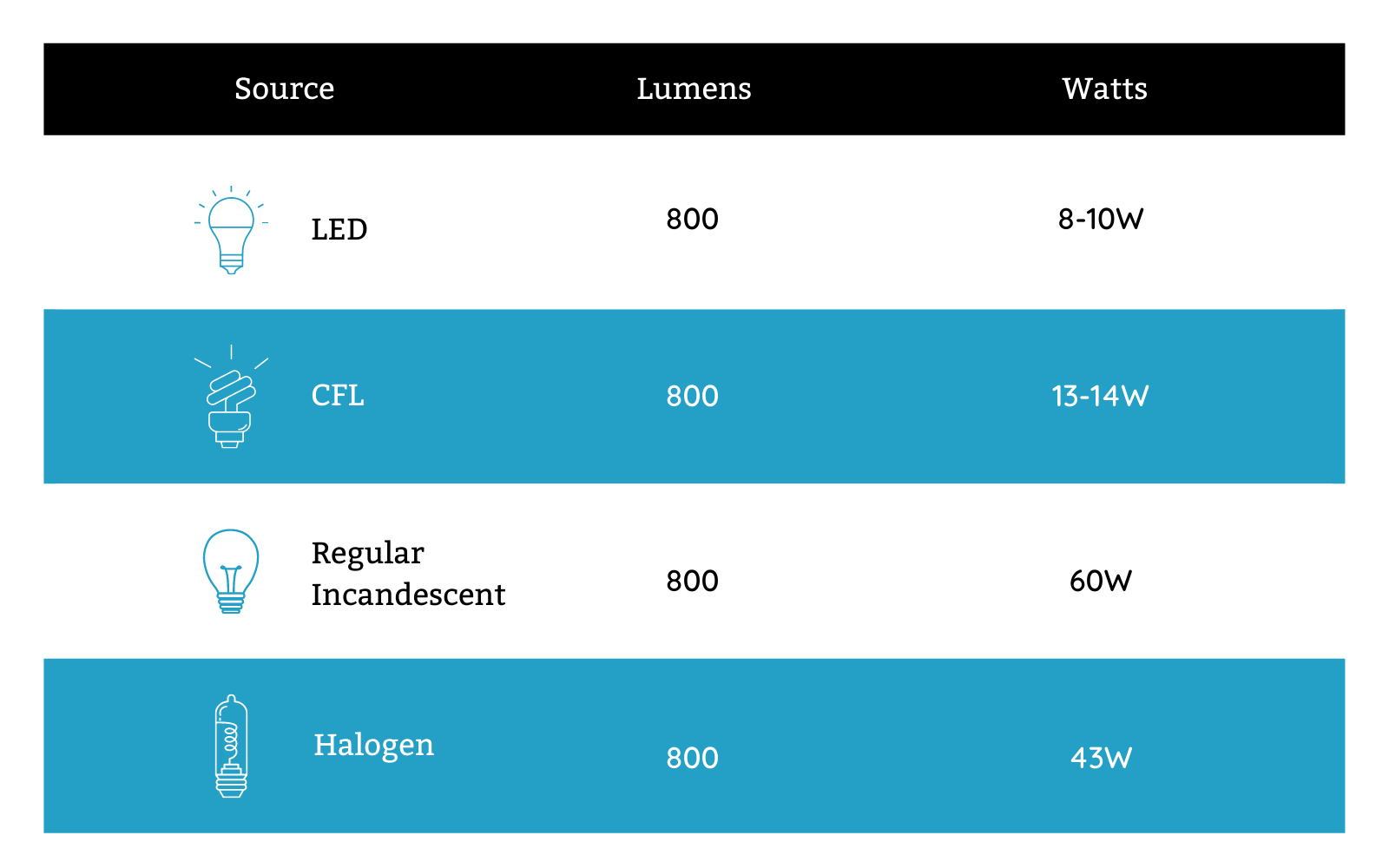
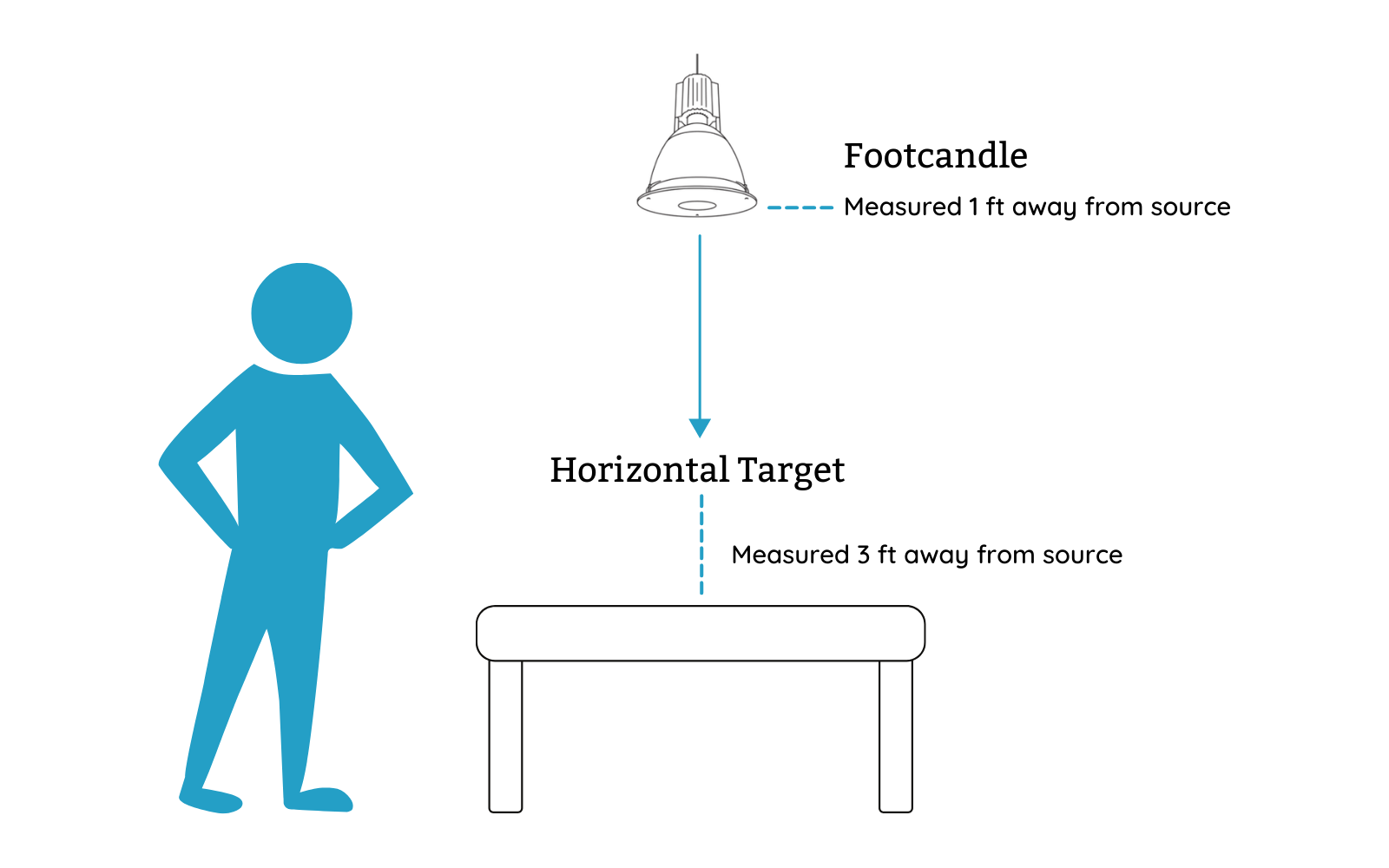
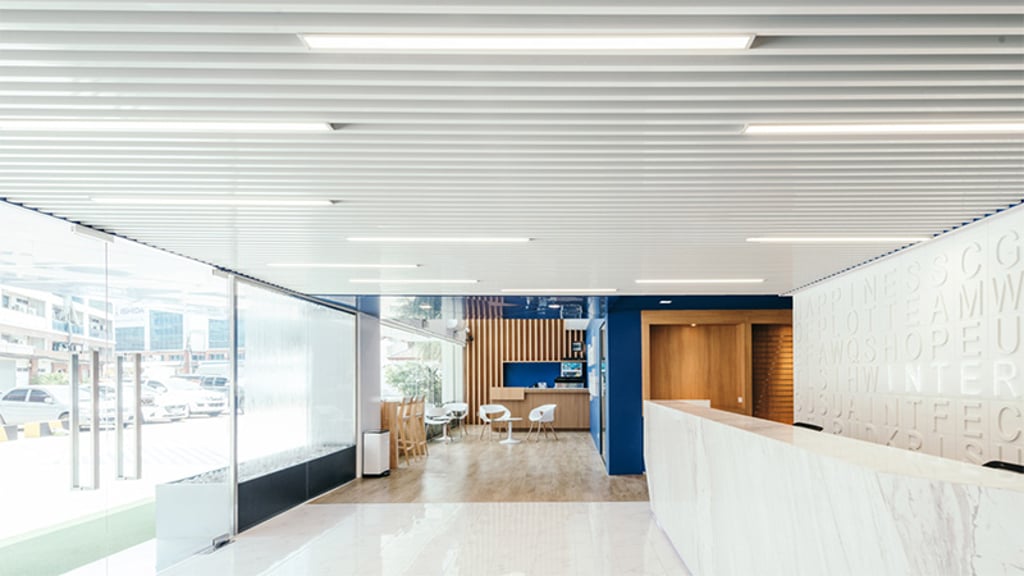

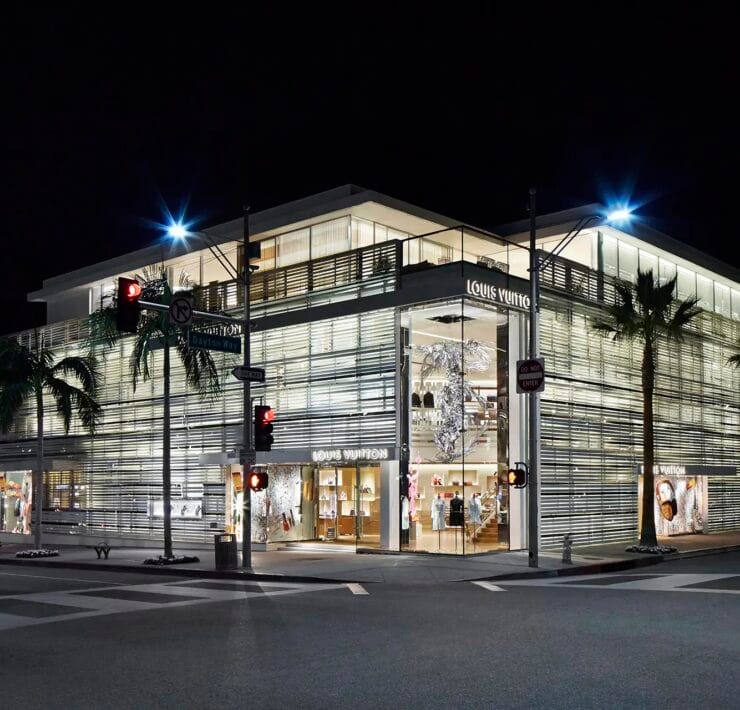

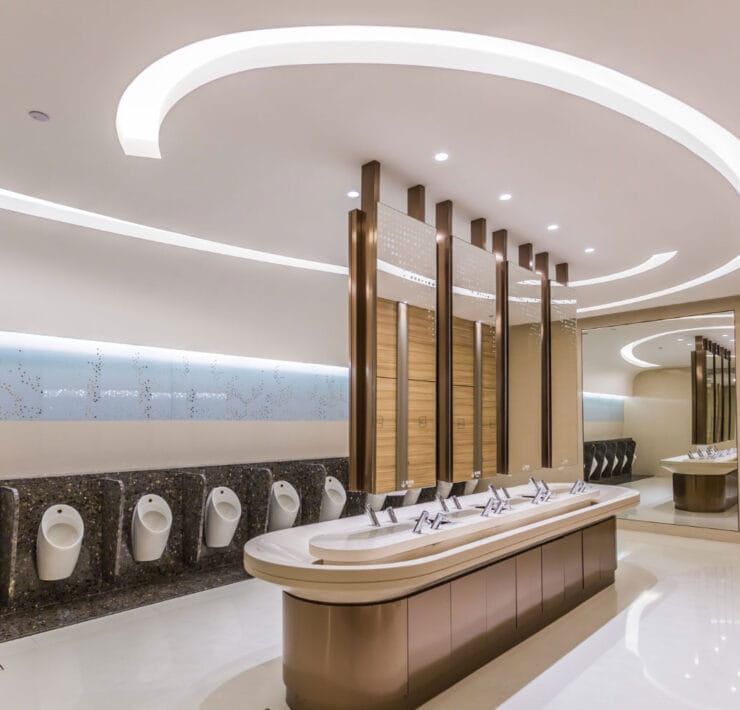
I saw some lights with 60 watt bulb capacity and want a well lit dining room. Would three pendant lights work or would 4 be better for a space with no outside light coming in?
Hi Sue, without knowing the square footage of your space, including your ceiling height and the color of the walls, it’s hard to say. Alcon Lighting generally recommends going with odd numbers for design aesthetics, however, in this case, I suggest you consider going with four fixtures and use a… Read more »
It is basically 9×15 with a jut out on one end of the room. It is an interior room with NO windows. The ceiling is 9 ft high and no paint color has been decided on yet.
Do you know the lumen output of the fixtures you’d like to install?
I’m not sure if the manual calculation or the calculator is incorrect, but when I compare results, they differ. I checked and recheck so I don’t know which result to believe!
Hi Edward, thanks for reading the lumen output post. Please clarify and describe what you’ve identified as the discrepancy and I can look into it.. What are the numbers you’re plugging in?
I have looked at my figures again and I realise where I was going wrong; I was converting from m sq to ft sq using an incorrect calculation.
Now that I’ve corrected, there’s not so much of a difference between the calculator and my workings out!
Thanks
Edward
In a roughly 20×20 office space we have 6 2×2 flush led ceiling lights. They are 4,000 lumens. Is this too much?
Hi Jami!
(1) What’s the ceiling height?
(2) Does the office have windows?
(3) Are the lights dimmable?
I am finding your answers to others thoughtful and beneficial so I decided to throw my questions out there. We were at a store today looking at lighting and I found myself getting quickly overwhelmed. We are building our house and are just beginning the wiring phase and no light… Read more »
Hi Jennifer,
It sounds like you may be overwhelmed by the project. I’ll try to help, if only by referring you to resources. Do you have a specific question?
Hi there,I have a 13 x18 kitchen with 1 window,light colored walls and 8′ ceilings
Want to use led lighting,os 5200 lumens good?
Doug, good luck with your project. Yours is a project-specific information request. We certainly welcome general requests and would love to help. However, it’s easier for Alcon Lighting to help when you send a message. Please feel free to send a detailed message so we can try to help. Thanks… Read more »
I have a shop that is 16 x 32 x 14 high I bought 8 2×2 4 tube led lights which are 5000 lumens each I believe 4000k. I plan on hanging them in 2 straight lines, in each line they will be @ 4 foot apart and @ 8… Read more »
James, good luck with your project. Yours is a project-specific information request. We certainly welcome general requests and would love to help. However, it’s easier for Alcon Lighting to help when you send a message. Please feel free to send a detailed message so we can try to help. https://www.alconlighting.com/support/
How much LED light would I need for a 25 foot flagpole
Hi,
Please reference:
https://www.alconlighting.com/blog/newsfeed/lighting-americas-flag/
Is 2300 lumens enough light to properly illuminate a 12 x 15 foyer with 16 foot ceiling?
Hi Amy,
Based on the details you provided, I recommend around 3000 lumens but 2300 lumens should be sufficient light for your foyer as well. Good luck!
Many thanks!
Wow! Thank you so so much I really needed to read this and know more. Also I have a question if you can help, so you know the deference between the led light and the grow light for plants? Can I use the normal led let ( with high Lumen)… Read more »
Great.
Perhaps I missed it, but if a measured kitchen space needs 4000 lumens and has 6 recessed ceiling lights, do you divide 4000 by 6 to get a per-fixture lumen level ? Or buy 6, 4000 lumen recessed (retrofit) fixtures (with dimmer?)? Thank you in advance.
Hi Scott,
You divide 4000 by 6 fixtures to get the needed lumen level per fixture.
Good luck!
Thank you for this helpful article. There is a diagram at the end entitled “Preferred LED Lighting Layout” that suggests LED lights should not be placed in corners. Does this apply to any type of LED lights or only to downlights?
Hi Elizabeth,
Good question!
The suggestion is for recessed downlight layout designs.
Wow. Consise factual and easy to understand. Plus imbedded calculator.
Good job
This is great information. My wife and I are struggling right now trying to get the right lighting in a home we bought. We just recently had installed 4x LED can lights but we are unsure of the Lumens but are pretty certain it is not enough. Our estimation is… Read more »
I have a 3200 sq ft large party room (an almost square space) with 10-12 ft ceilings (slight vault). I’d like to do recessed downlights as the main source of light. The walls are a light color. If my fixtures each provide 1200 lumens, how many fixtures will I need?… Read more »
Hi Kathy! Multiply the 3,200 by the recommended foot candles for a party room to get the total number of lumens you’ll need for the space. I recommend 15-30 but that’s ultimately up to you and your designer. Reference the chart in the post. Aim for 30 foot candles with… Read more »
thanks- that helps 🙂
Thanks very much for this resource! I am trying to light a basement art studio that has no natural light. It’s about 14′ x 20′; the ceiling is between 6′ and 7′, depending whether one measures from the top or bottom of the beams across it. Your calculator says I… Read more »
Yes, Alice!
You could also add an adjustable ceiling mount spot light or a directional floor lamp. Good luck!
Thanks again. I really appreciate it.
What kind of lighting is best for overhead tube light in kitchen….Cool, Warm, Bright? is 4000K too bright?
Hi Ann,
A cooler, 4000K light color temperature serves as a better work light. In this case, cooking or baking.
Good luck!
Hello,
If I want to install in-ground well lights (2) to shine up at a 5′ x 8′ flag on a 35 foot pole, how many lumens should each light fixture be?
Hi Duane,
Please refer to this post:
https://www.alconlighting.com/blog/newsfeed/lighting-americas-flag/
Good luck!
Hi,
I understand this is rough estimate as there are other factors. My question is, if I determined my needed lumens on the entire room, should I divide it to number of fixtures/downlights?
Yes, Richard. You’re exactly right.
What a wonderfully well-written, informative piece. I’m a picky, writer-type, from the technical and non-fiction arenas, and I love finding such good writing scattered around the web, in non-obvious places.
Nice explanation
So enjoyed your article on ‘How to Determine how many Lumens you’ll need to properly light your space’. So clear, so brilliantly explained…..at least 100,000 lumens worth!
Thank you for such crystal clear text and the usefull tool available that allow us to do quick calculations.
I found this article while researching about IES profiles for a game developer. We have the ability to use IES profiles for each light source in our development tools, but I needed to find a good source on how much lighting to use in each “room” to help narrow down… Read more »
Hi David, This is such a helpful and well-written blog entry. Perhaps you can offer me a suggestion. I am looking for a lamp for a bedside table, specifically to have enough light to be able to do light reading or paperwork (eg, paying bills) before going to sleep. I… Read more »
Hi Terry,
If you would like to use the lamp with all other lights off in the room, and still be able to read, I’d double that lumen count to 400 at least. 400-500 lumens to be safe.
Glad you found the post useful. Good Luck.
I just wanted to say what an absolute gem of a website you have here. I live abroad and am not able to purchase from yourselves, but just wanted to say thank you for such as awesome blog and help.
Hi, you should check the calculator on this page – the output for meters compared to feet is way off.
First let me say how grateful I a that I found this blog – your explanation of how to determine the total amount of light required for a rec room I am building was easy to understand and has moved me significantly closer to understanding how many led pot light… Read more »
Hi John, Great questions. Here’re the answers. 1. You wrote that “one could see with better clarity in a room lit with LED lumens compared to one lit with the equivalent number of fluorescent, incandescent or halogen lumens.“. Is there a conversion factor to be used when making LED bulb… Read more »
David Thank you for the prompt replies as I expect you are a rather busy person ! I think I understand what you are saying about beam spread….. if a 600 lumen down facing ceiling led light fixture has a 45 degree beam spread then the light circle diameter would… Read more »
[…] up due to huge cranes that would be moving throughout the space. The client wanted to achieve 100 footcandles because it needed to be super bright, but they settled on 85 footcandles at the work […]
I have a 10×10 foot space, no windows, dark brown pegboard, in a warehouse with ceilings very, very high. Pegboard is 8 feet Tall on three sides fourth side is open so a little light there, no nearly enough! I want customers to be able to see everything well and… Read more »
Hi Ruth, I suggest a high bay light with an adjustable aircraft cable (at least 96 inches) depending on how high your ceiling is. Also, you may choose a fixture that is dimmable. If your budget permits, consider also adding two wall sconces for indirect lighting. They will help reduce… Read more »
Hi, We are building a Sailing Center with a classroom that measures 22′ X 28′. Ceiling height is about 12′. It’s a cathedral ceiling so I am considering something like a school room chandeleir. I’m sure there would be a number of them. We would be using LEDs in the… Read more »
A modern LED chandelier is a great option for a sailing center classroom. The cathedral ceiling will allow the light to reflect and spread evenly throughout the room. Here are some things to consider: Size: The chandelier should be the right size for the room. I would suggest a diameter… Read more »
Hello, Designing a tiny house art studio. The space will be 11x15ft with a single slope ceiling from 8 ft up to 11ft. Aesthetically I like the idea of the recessed, trimless linear lighting. Using “Shop” on the calculator it says 11,055 lumens. If we plan for a 4x8ft rectangle… Read more »
Hi Roger, I am forwarding your question to one of our lighting consultants. They can help specify product. The 12100-10-R has a one inch aperture width, uses a remote driver and would be my pick for a tiny house art studio. Best of luck.
Can you provide an example for determining required lumens for high ceilings with the footcandles calculation?
[…] a Bathroom Lumens Calculator: When determining the optimal light intensity for your bathroom, you can use a bathroom lumens […]
In a 12×16 dining room with vaulted ceiling that is 12′ at the highest point, would 3400 lumens be sufficient?
Zina, With this calc, a 12’x16′ room with a 12′ (at highest) vaulted ceiling, using 850 lumen 60 degree beam spread downlights (the Alcon 3″ downlight IES file used), will produce an average of 23 footcandles of illumination on a 2.5′ workplane (table top). The 23fc is sufficient, but a… Read more »